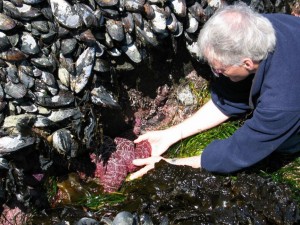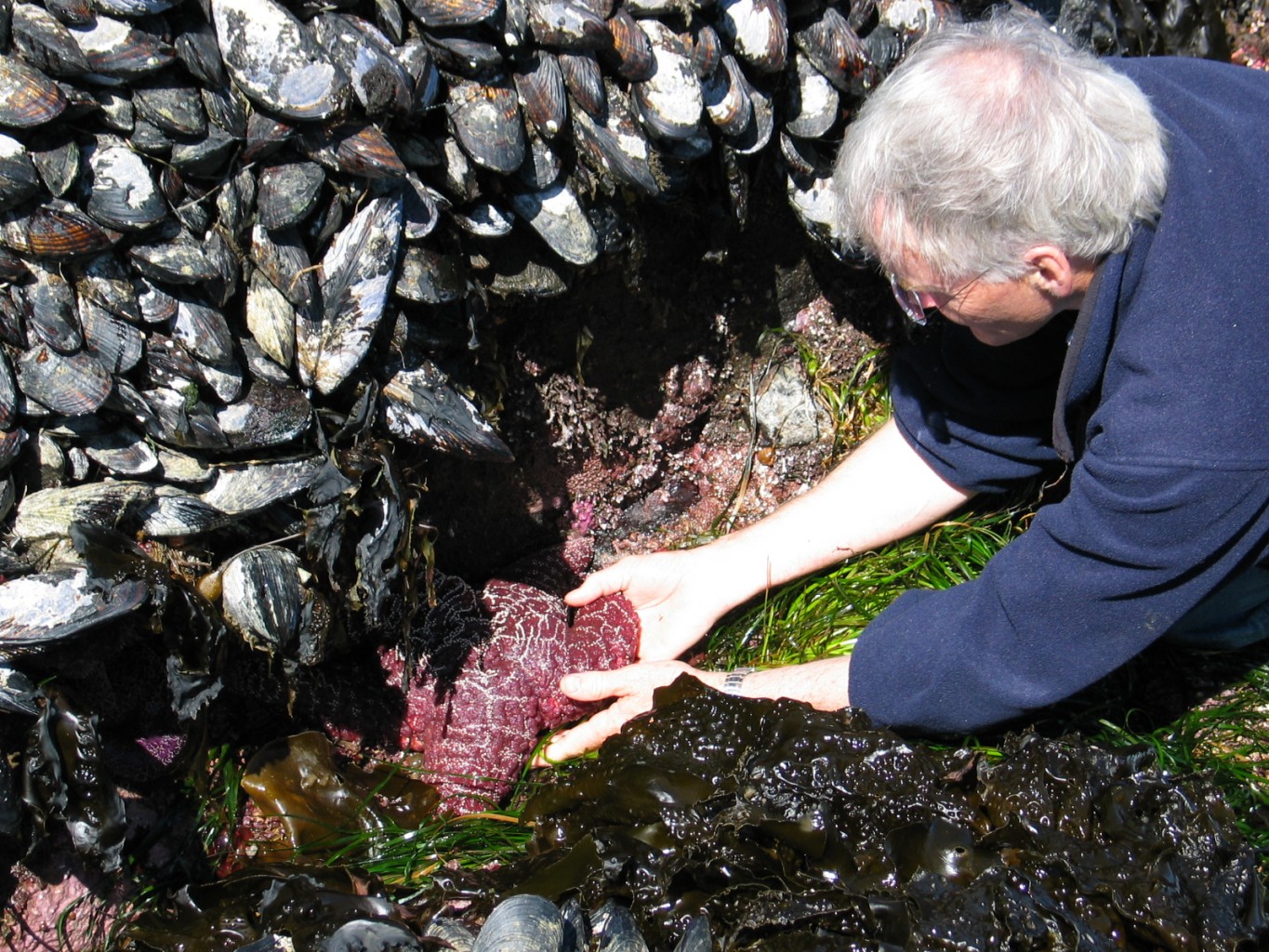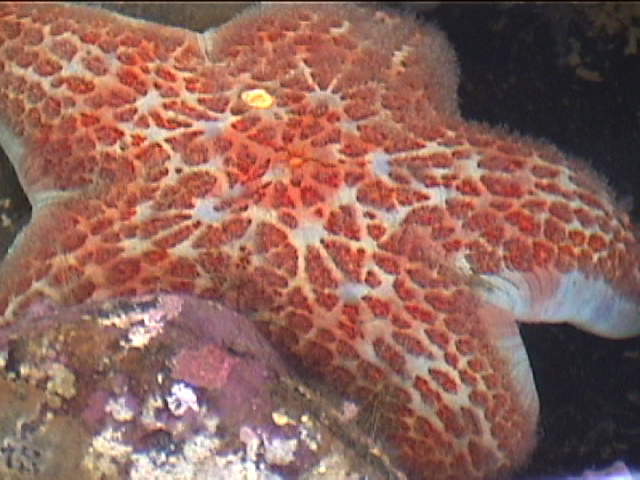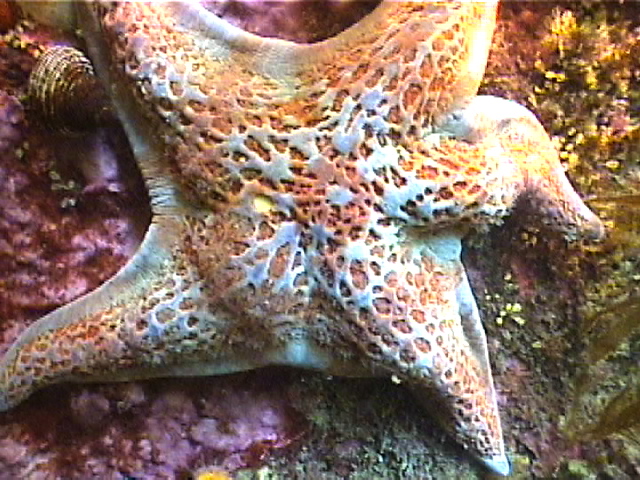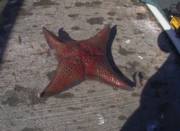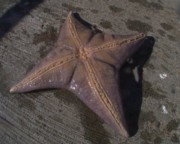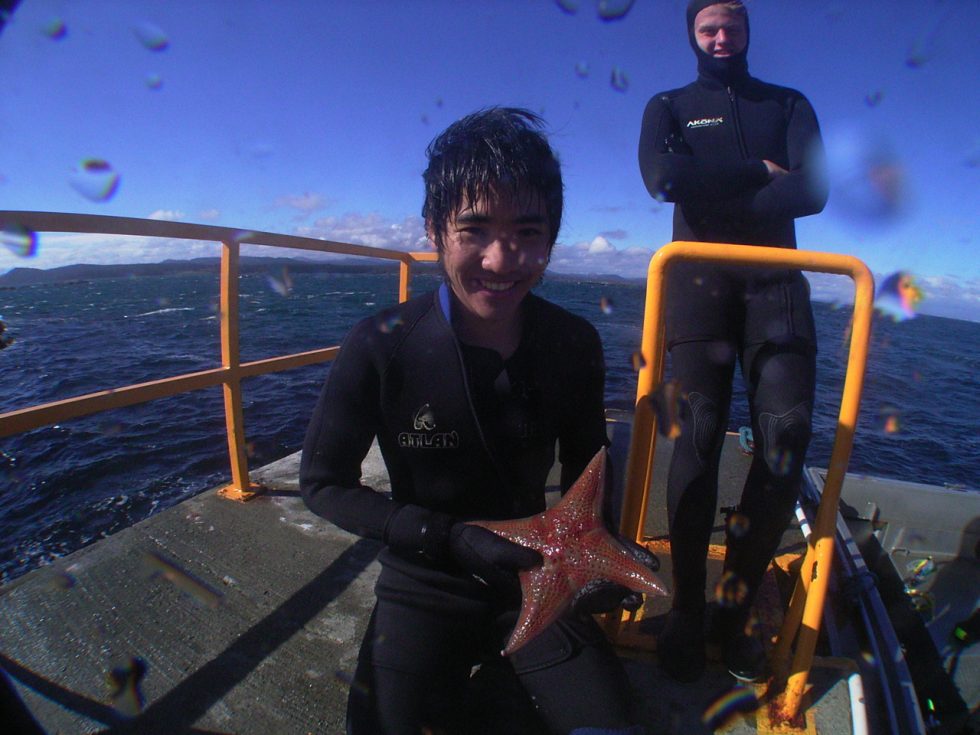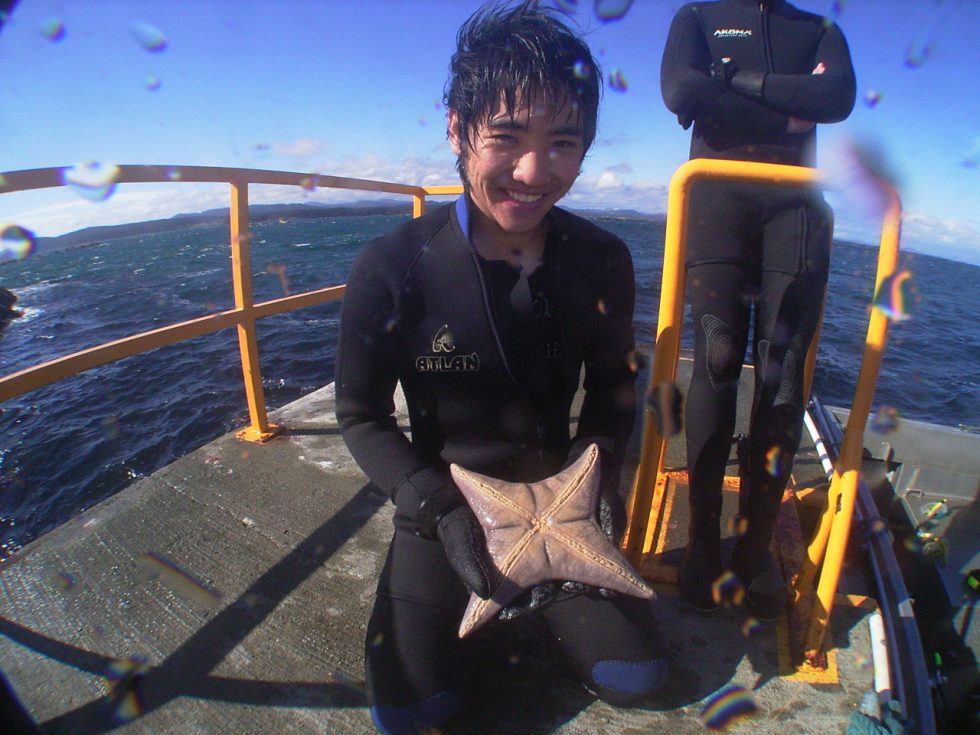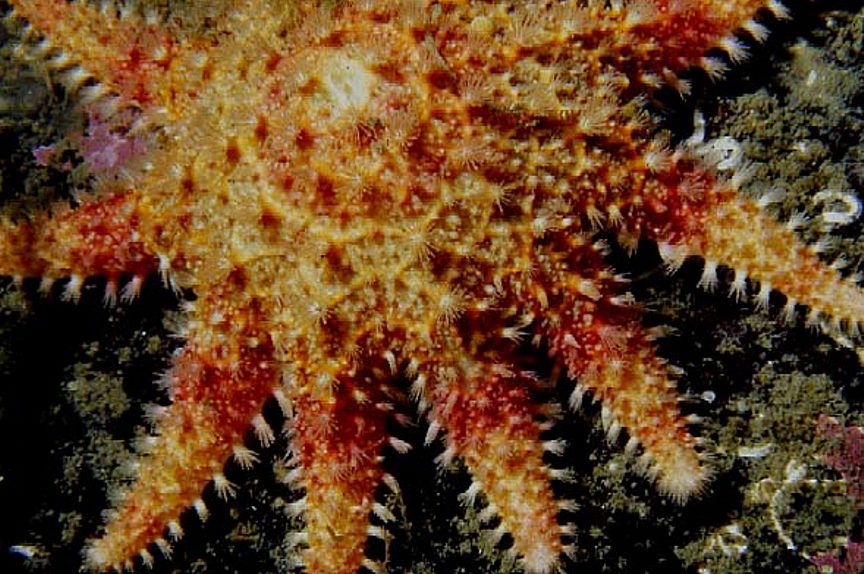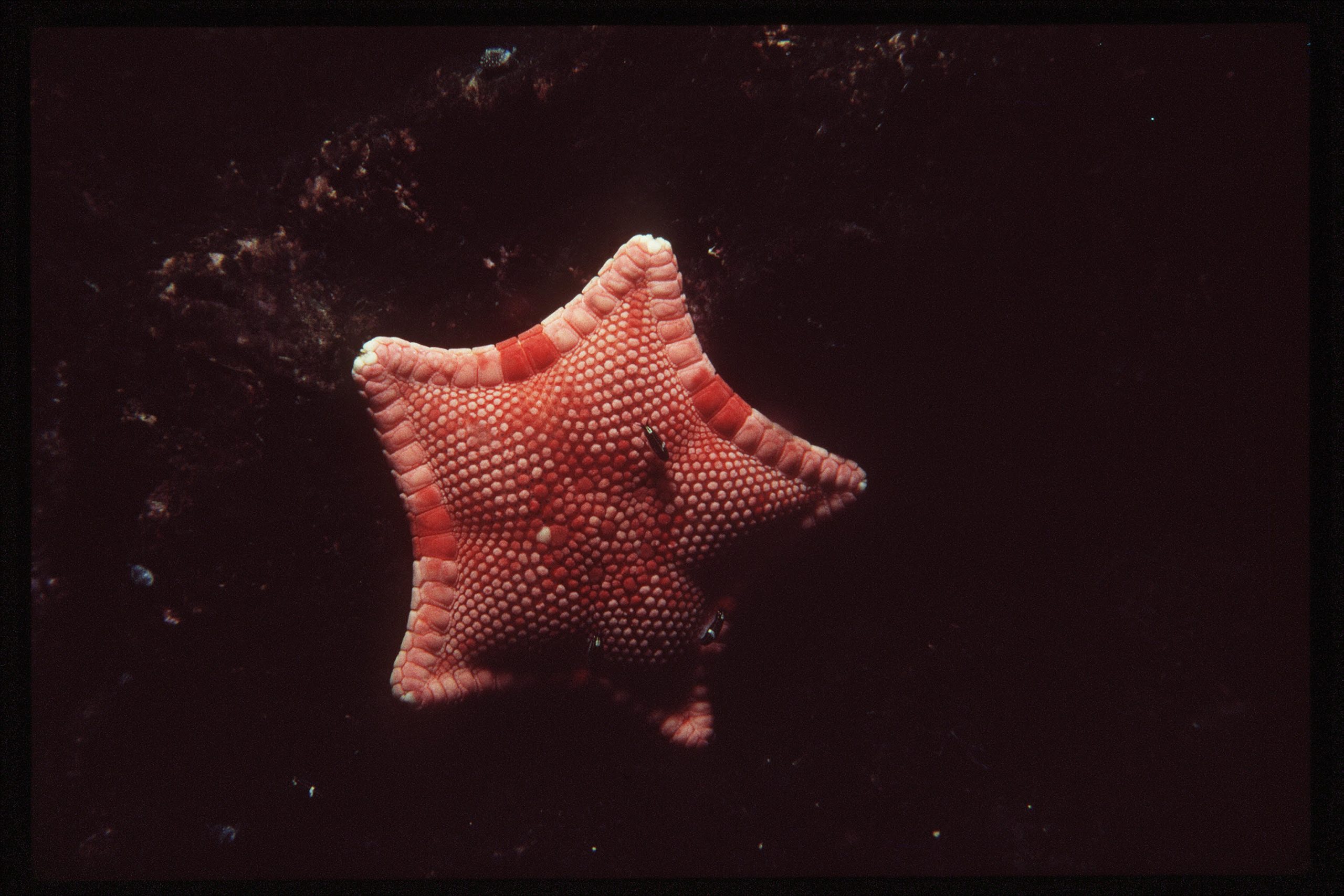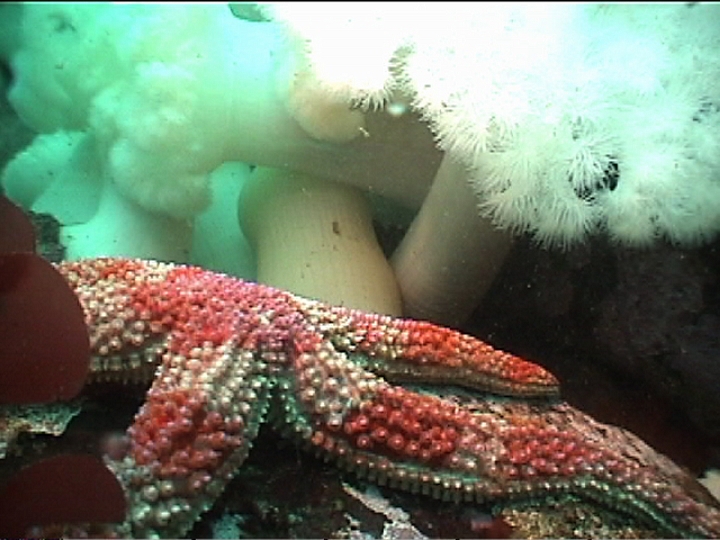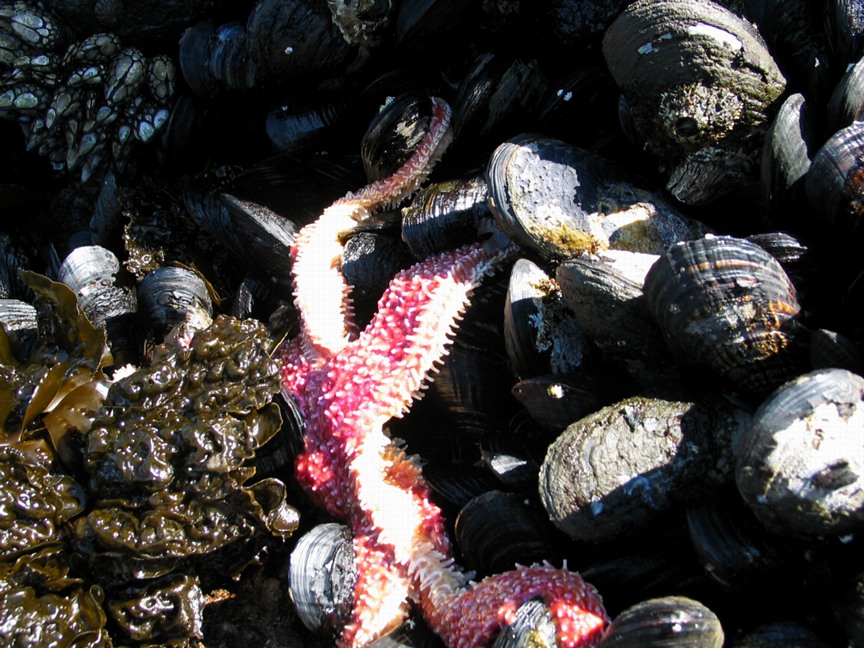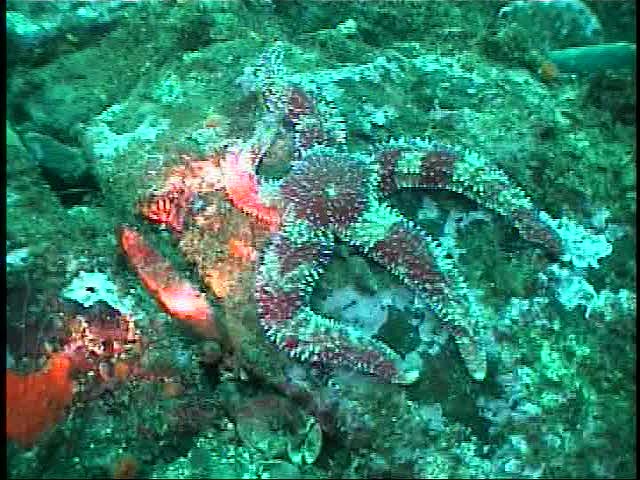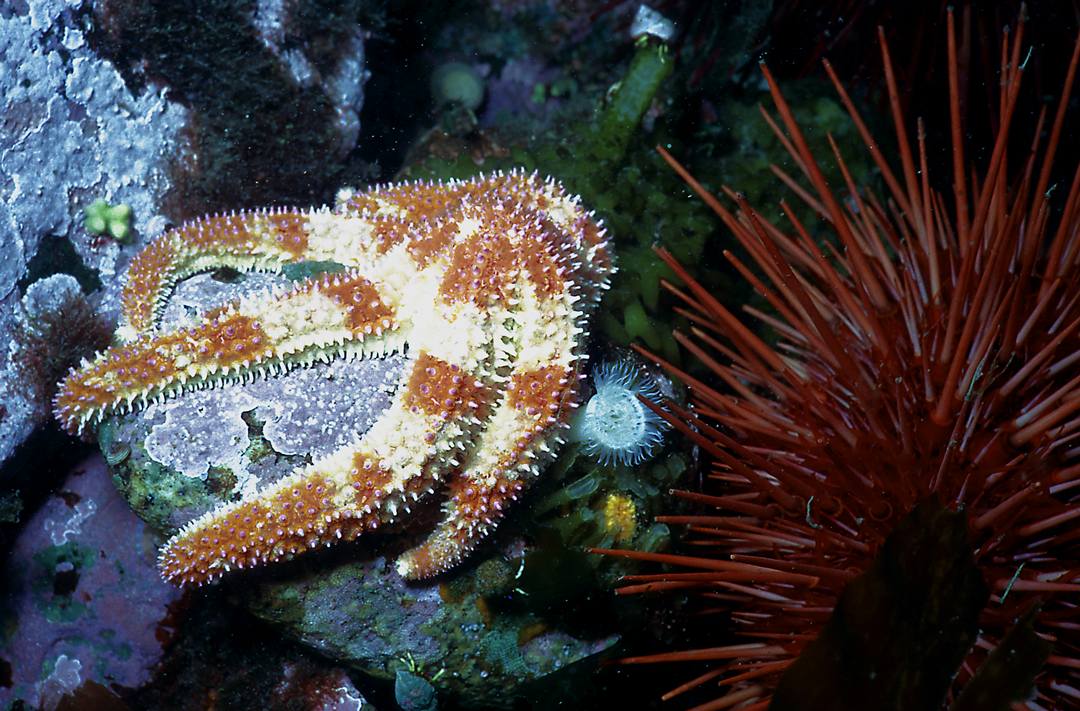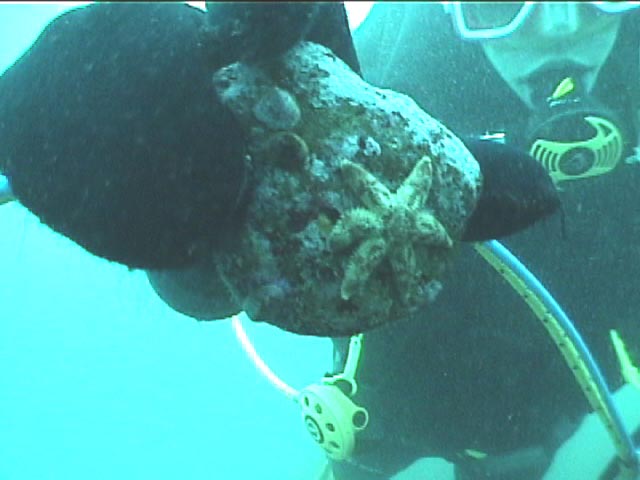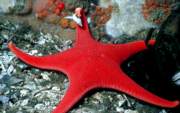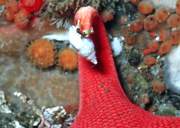I found another black oystercatcher nest down in front of the Winch House, so moved camera 3 over to it. (Update note on July 17–2 young were observed near the nest). In the morning I went out on the intertidal for the minus tide. Excellent long exposure of the surge channel and the cave on the South west side. Also got onto Anita”s intertidal island down from the helipad on the west islet which becomes a penninsula at low tide.
I was looking for the large (45 cm diameter Purple star. Which I saw there two years ago, and at that time I thought he was the only one on the island. This time I found another smaller one– 30 cm diameter in a similar protected channel only 2 metres from the other one. Since these sea stars inhabit the lower intertidal zone, they cannot withstand the heavy wave action that occurs in that area without these deep channels which are protected by a rise on the seaward side to the west. As far as I know these are the only two purple stars occurring at Race Rocks. They are very common however in other sheltered inland coastlines in BC and are frequently the first sea star that visitors to BC shores notice. I also made note of a large number of very colourful brooding anemone exposed on the same protected mussel-covered wall on that island. There was an unusual abundance of blue ones which I remember to be rather rare when seen by diving in that area previously . One gull nest close to the science centre has chicks hatching.’, ‘Garry’, ’09:59:49

